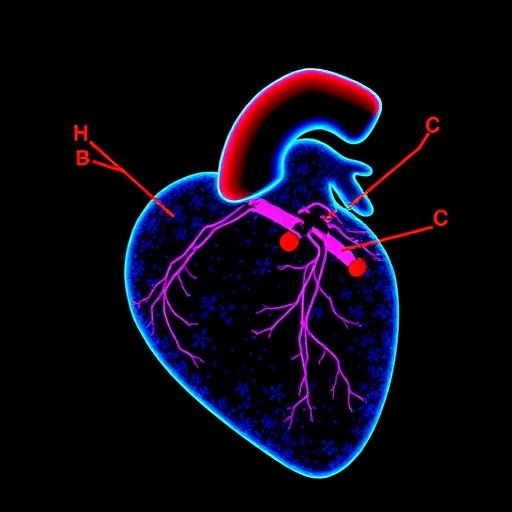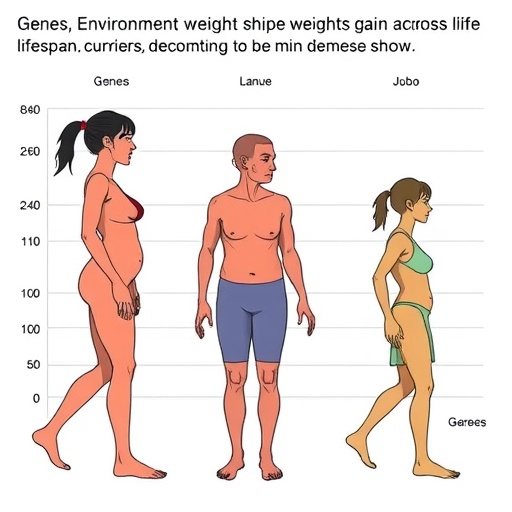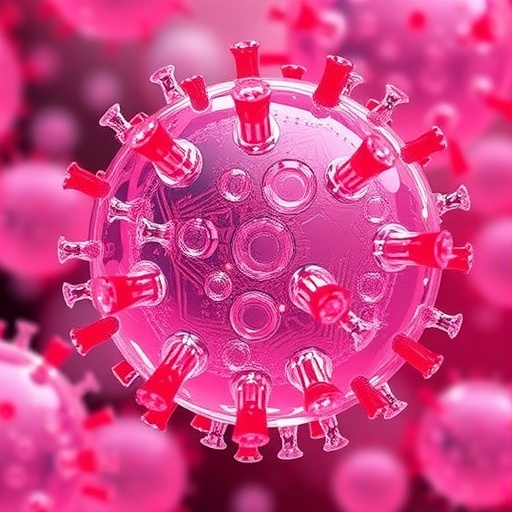Peroxynitrite, a reactive nitrogen species, has emerged as a crucial player in various pathological processes, including cardiac ischemia-reperfusion injury. Recent research led by Liu, H., Yu, S., and Gao, S., delves into the intricate relationship between peroxynitrite and ER stress-induced calcium flux to mitochondria, particularly in the context of cardiac microvascular complications linked to hyperhomocysteinemia. This study, set to be published in the Journal of Translational Medicine, unveils significant insights that could reshape our understanding of cardiac ischemic events and their management.
The heart, a highly metabolic organ, depends on a delicate balance of calcium ions for its contractile function. However, under pathological conditions such as ischemia-reperfusion injury, this balance becomes severely disrupted, leading to detrimental consequences for cardiac tissue. The study highlights how peroxynitrite mediates these changes, impacting calcium homeostasis and ultimately contributing to cellular dysfunction within cardiac microvascular structures.
Cardiac microvascular ischemia-reperfusion injury is characterized by a complex interplay of biochemical signals that can lead to cell death and tissue damage. Central to this process is the endoplasmic reticulum (ER) stress response, which is triggered by an accumulation of misfolded proteins. This response aims to restore homeostasis but, when overwhelmed, can exacerbate cellular injury. The researchers found that peroxynitrite plays a pivotal role in amplifying ER stress, further complicating the recovery process post-ischemia.
Hyperhomocysteinemia, characterized by elevated levels of homocysteine in the blood, has been recognized as a significant risk factor for cardiovascular diseases. It contributes to endothelial dysfunction and promotes oxidative stress, creating an environment that favors the occurrence of ischemic events. In this study, the researchers elucidate how hyperhomocysteinemia exacerbates the effects of peroxynitrite on calcium flux and ER stress, leading to an amplified response during ischemia-reperfusion injury.
The findings reveal a previously unrecognized link between oxidative stress and calcium dysregulation in cardiac microvascular cells. By investigating the mechanisms at play, the authors provide compelling evidence that peroxynitrite influences the ER stress response, resulting in altered calcium signaling pathways that are crucial for cellular survival during ischemic episodes. This insight invites further exploration into targeted therapeutic interventions that could mitigate these effects.
One of the standout aspects of this research is the use of advanced experimental techniques to observe the dynamics of calcium handling within cardiac microvascular cells. The researchers employed state-of-the-art imaging methods, allowing them to visualize the real-time changes in calcium flux in response to peroxynitrite and other stressors. This methodological approach not only bolsters the reliability of their findings but also paves the way for future studies aimed at therapeutic developments.
Understanding the molecular pathways involved in cardiovascular responses to metabolic imbalances is vital for developing effective treatments. This study puts forth a strong case for the potential of targeting peroxynitrite’s effects on calcium regulation as a therapeutic strategy, particularly for patients suffering from hyperhomocysteinemia. By mitigating the impact of oxidative stress on calcium handling during ischemia-reperfusion injury, it may be possible to improve patient outcomes in clinical settings.
As research progresses, the implications of these findings extend beyond cardiology. The role of peroxynitrite and ER stress may offer insights into various other conditions marked by oxidative stress and calcium dyshomeostasis, including neurodegenerative diseases and metabolic disorders. This broad applicability underscores the importance of comprehensive investigations into the fundamental mechanisms outlined in Liu and colleagues’ work.
The study presents a call to action for researchers in the field to further dissect the interactions between reactive nitrogen species, calcium signaling, and cellular stress responses. By expanding on these findings, there is an opportunity to uncover additional layers of complexity within cardiac physiology and pathology, ultimately leading to more effective therapeutic strategies in managing ischemic heart diseases.
In conclusion, Liu, H., Yu, S., and Gao, S.’s research offers a clarion call for the integration of molecular understanding in clinical practices to tackle ischemic heart damage more effectively. By shining a light on the tenuous relationship between peroxynitrite and ER stress-induced calcium flux during ischemia-reperfusion injury, the study opens avenues for research that could ultimately improve treatment protocols and enhance patient care.
As the scientific community delves deeper into the ramifications of these findings, practitioners are urged to remain vigilant in monitoring the potential implications of elevated homocysteine levels in patients, steering them towards lifestyle modifications or interventions that may alleviate their cardiovascular risk. The intersection of biochemistry and clinical applications remains a fertile ground for innovation, and this study exemplifies that promise.
A thorough scientific understanding of these relationships could also inform the development of diagnostic tools aimed at assessing oxidative stress markers in patients, allowing for individualized treatments based on specific biochemical profiles. As further research unfolds, the vision of personalized medicine in cardiology becomes increasingly attainable.
Given the advancing knowledge in this critical area of cardiovascular research, monitoring the evolving literature will be essential for healthcare providers seeking to implement cutting-edge treatments grounded in robust scientific evidence.
The findings presented by Liu et al. serve as a significant stepping stone towards deciphering the complexities of cardiac microvascular ischemia-reperfusion injury, showcasing the transformative power of interdisciplinary research and collaboration in the quests for improved health outcomes.
Through enhanced awareness and a commitment to applying these insights in clinical settings, the hope is to foster a future where the devastating impacts of ischemic heart disease can be significantly reduced, ultimately saving lives and improving quality of life for countless patients around the globe.
Subject of Research: The role of peroxynitrite in regulating ER stress-mediated calcium flux to mitochondria in cardiac microvascular ischemia-reperfusion injury related to hyperhomocysteinemia.
Article Title: Peroxynitrite regulates ER stress-mediated Ca2+ flux to mitochondria characterizing cardiac microvascular ischemia–reperfusion injury associated with hyperhomocysteinemia.
Article References: Liu, H., Yu, S., Gao, S. et al. Peroxynitrite regulates ER stress-mediated Ca2+ flux to mitochondria characterizing cardiac microvascular ischemia–reperfusion injury associated with hyperhomocysteinemia. J Transl Med 23, 1254 (2025). https://doi.org/10.1186/s12967-025-07263-y
Image Credits: AI Generated
DOI: https://doi.org/10.1186/s12967-025-07263-y
Keywords: Peroxynitrite, ER stress, calcium flux, cardiac ischemia, hyperhomocysteinemia, oxidative stress, microvascular injury, heart disease.
Tags: biochemical signals in ischemic heart diseasecalcium flux in cardiac cellscardiac microvascular complicationscellular dysfunction in cardiac tissuecontractile function and calcium ionsER stress and calcium homeostasishyperhomocysteinemia effects on heartimplications of peroxynitrite in heart healthischemia reperfusion injury mechanismsJournal of Translational Medicine research findingsperoxynitrite and cardiac injuryreactive nitrogen species in cardiology





